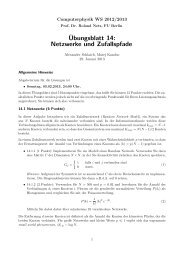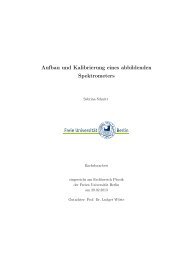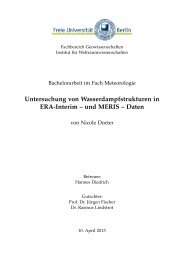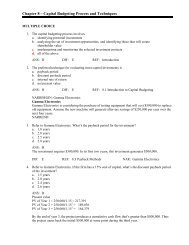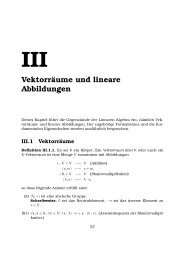Rígsþula och Codex Wormianus: Textens funktion ur ett ... - Userpage
Rígsþula och Codex Wormianus: Textens funktion ur ett ... - Userpage
Rígsþula och Codex Wormianus: Textens funktion ur ett ... - Userpage
You also want an ePaper? Increase the reach of your titles
YUMPU automatically turns print PDFs into web optimized ePapers that Google loves.
84 Karl G. Johansson<br />
Tómasson, Sverrir. 1993. “Formáli málfræðiritgerðanna fjög<strong>ur</strong>ra í Wormsbók.” Íslenskt mál og<br />
almenn málfræði 15:221–40.<br />
Vogt, Walther Heinrich. 1927–28. “Der frühgermanische Kultredner: Þulr, þula und eddische<br />
Wissensdichtung.” Acta philologica Scandinavica 2:250–63.<br />
Wessén, Elias. 1946. “Den isländska eddadiktningen: Dess uppteckning <strong>och</strong> redigering.” Saga<br />
<strong>och</strong> sed, 1–31.<br />
Young, Jean I. 1933. “Does <strong>Rígsþula</strong> Betray Irish Influence?” Arkiv för nordisk filologi 49:<br />
97–107.<br />
Summary<br />
Discussions of eddic poetry often revolve around the question of oral versus written tradition<br />
and, in this connection, the provenance and age of individual poems. It is not always clear where<br />
and how the distinction between oral and written tradition should be drawn, though this is often<br />
a methodological problem that should be addressed explicitly. My approach in this paper is based<br />
on the tenet that the manuscript tradition and context in which a particular poem has been<br />
transmitted and preserved should be thoroughly investigated. The poem <strong>Rígsþula</strong> is scrutinized<br />
as a part of a compilation, focusing on its function within the compilation. Questions of age and<br />
provenance are therefore bracketed.<br />
<strong>Rígsþula</strong> is preserved in just one medieval manuscript, <strong>Codex</strong> <strong>Wormianus</strong> (AM 242 fol.),<br />
dated to ca. 1350. Versions of the poem found in later manuscripts all derive from the version in<br />
<strong>Codex</strong> <strong>Wormianus</strong>, which ranks among the most important West Nordic manuscripts from the<br />
fo<strong>ur</strong>teenth cent<strong>ur</strong>y. Besides <strong>Rígsþula</strong> on what is now folio 61, it contains a version of Snorra<br />
Edda (fols. 1–35), the fo<strong>ur</strong> grammatical treatises (fols. 36–54), verses 7 through 85 of Háttatal<br />
(fols. 55–60), and a fragmentary, heavily revised redaction of the section on ókennd heiti from<br />
Skáldskaparmál (fols. 62–63). The manuscript may be construed as a manual of poetics and<br />
rhetoric, as earlier commentators have observed; this is the point of depart<strong>ur</strong>e for my discussion.<br />
I maintain that <strong>Rígsþula</strong> should be viewed as a part of this poetical-rhetorical context. The<br />
poem has the character of a þula and was placed at the end of the manuscript, followed by the<br />
redaction of ókennd heiti. Plausible arguments may be adduced for the view that these texts<br />
were incorporated in this position by the man who compiled the handbook.<br />
I argue that the compiler of <strong>Codex</strong> <strong>Wormianus</strong> composed the introductory prose to <strong>Rígsþula</strong><br />
to make the poem compatible with the tales of the gods in Snorra Edda, and that the identification<br />
of Rígr with Heimdallr in the introduction should be seen in this light. Since the hand that<br />
wrote the version of Voluspá contained in Hauksbók (AM 544 4º, fols. 20–21) is the same hand<br />
that wrote <strong>Codex</strong> <strong>Wormianus</strong>, it is quite probable that the <strong>Wormianus</strong> compiler was familiar with<br />
the words of Voluspá 1.1–4, which indirectly characterize Heimdallr as progenitor of the various<br />
estates of men. The parallel to Rígr’s function in <strong>Rígsþula</strong> as initiator of the classes of mankind<br />
could have motivated the connection made between Rígr and Heimdallr in the introductory<br />
prose. The compiler wanted to integrate <strong>Rígsþula</strong> into his compilation, particularly with regard<br />
to Snorra Edda. For this reason, I believe that the connection between Rígr and Heimdallr<br />
cannot serve to shed light on the function of Heimdallr in Old Norse mythology, but should be<br />
viewed rather as a fo<strong>ur</strong>teenth-cent<strong>ur</strong>y connection made by the compiler of <strong>Codex</strong> <strong>Wormianus</strong>.




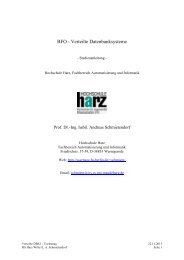
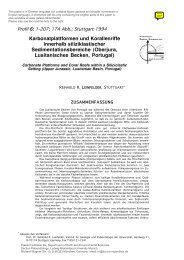


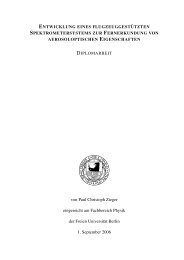
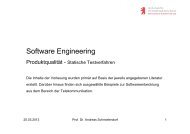
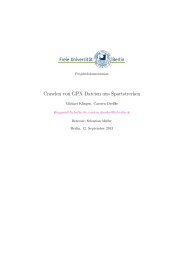
![[UNBEGRENZTE MÖGLICHKEITEN?] - Userpage](https://img.yumpu.com/22343335/1/184x260/unbegrenzte-moglichkeiten-userpage.jpg?quality=85)
